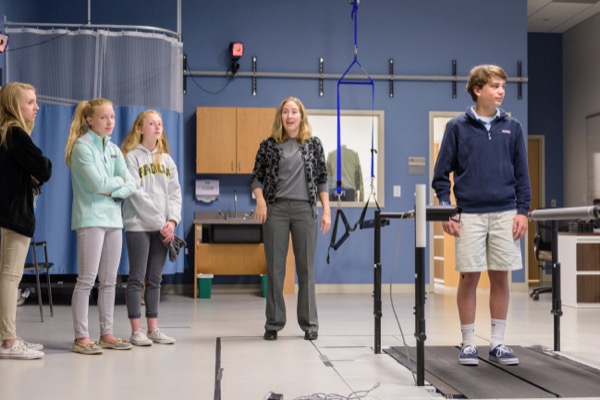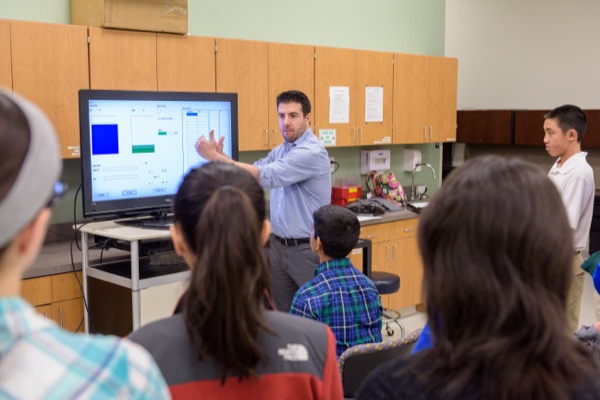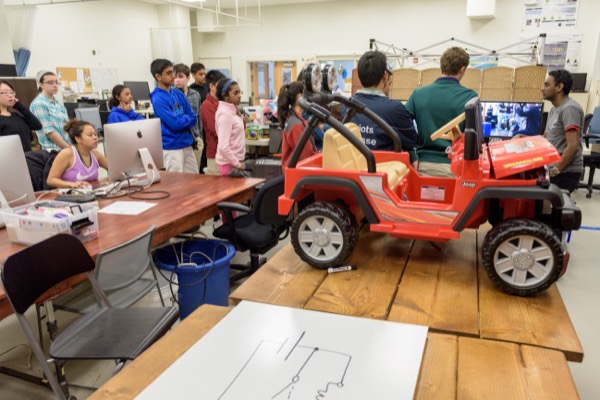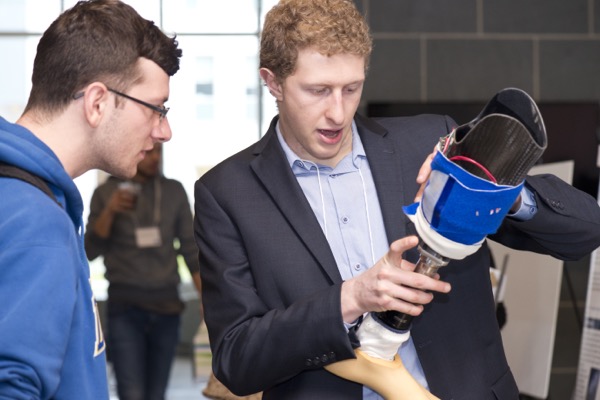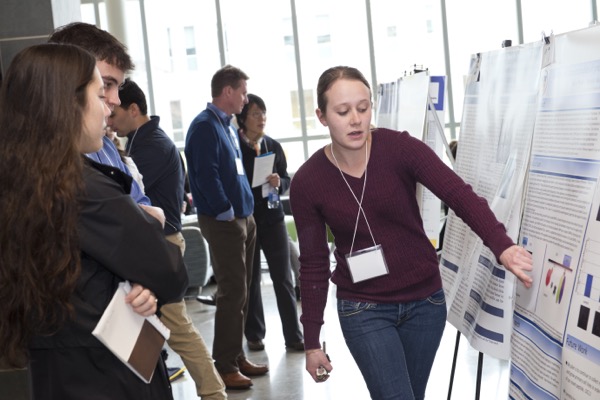CBER Day
Center for Biomechanical Engineering Research welcomes high school students
8:17 a.m., April 15, 2016--Close to 100 middle and high school students visited the Health Sciences Complex at the University of Delaware on National Biomechanics Day, April 7, joining their peers across the country in a nationwide “Biomechanics Open House.”
The open house was held in conjunction with CBER Day, an annual event at UD that showcases work done by faculty and students in the Center for Biomechanical Engineering Research.
Research Stories
Chronic wounds
Prof. Heck's legacy
Led by Elisa Arch, assistant professor in kinesiology and applied physiology, a team of volunteers from the colleges of Engineering and Health Sciences offered teen-friendly demonstrations in 10 labs at the facility on the Science, Technology, and Advanced Research (STAR) Campus.
The visitors not only learned about how orthotics and prosthetics are made but also got a feel for what it’s like to walk with a lower limb prosthetic.
They saw how technology — from an inexpensive Wii balance board to a state-of-the-art 3-D motion analysis system — can be used to improve function in daily life, teach fall prevention, and improve running biomechanics.
In the Neuromuscular Biomechanics Lab, Jill Higginson, associate professor of mechanical engineering and biomedical engineering, demonstrated how a split-belt treadmill can be used to restore normal walking in people who have experienced a stroke.
She also suggested career options for people with expertise in biomechanics, including the development of sports-based video games.
“Animations like the ones used in Madden NFL are based on motion data collected from real athletes,” she said. “Other opportunities include the design of exercise equipment and wearable devices that can help people monitor their fitness every day in the real world.”
Through the Perry Initiative, participants at the open house learned about simple clinical tests to diagnose knee injuries, and in the GoBabyGo lab, they saw how research can be transitioned directly into the community to promote social mobility for very young children with disabilities.
They observed the workings of the ALEX bilateral exoskeleton for gait rehabilitation, and they saw what the Achilles tendon looks like in an ultrasound image.
“We tried something new this year by pairing CBER Day with National Biomechanics Day, and I think it was a great success,” said Mike Santare, CBER director and professor of mechanical engineering. “Our visitors had a chance to not only observe activities in our labs but also try out some of the technologies and ask questions. I’m very grateful to all of our volunteers for taking the time to share their knowledge with young members of the community.”
Research symposium
The venue shifted to the Harker Interdisciplinary Science and Engineering Laboratory in the afternoon for the traditional CBER Day program.
Two sessions featured a total of 38 posters in five focus areas: assistive devices; bone, cell and cartilage; gait; motor control; and orthopedics. Project topics ranged from helping amputees gain balance to the effect of surgical approach on gait mechanics after total hip arthroplasty.
Prizes were awarded to the following poster presenters:
- First Place, Session 1: “Lower Knee Flexor Muscle Forces During Gait Are Associated with 2nd ACL Injury In Young Female Athletes,” Jacob Capin, Ashutosh Khandha, Ryan Zarzycki, Kurt Manal, Thomas Buchanan, Lynn Snyder-Mackler.
- First Place, Session 2: “Changes in Corticomotor Drive to Plantarflexor Muscles Induced by Gait Training with Functional Electrical Stimulation Positively Influence Post-Stroke Gait Mechanics,” Jacqueline Palmer, HaoYuan Hsiao, Stuart Binder-Macleod.
- People’s Choice: “Helical Versus Euler Angles for Describing Scapulothoracic Motion,” Elizabeth Rapp, Tyler Richardson, James Richards.
Sponsored by the American Society of Biomechanics, National Biomechanics Day was aimed at demonstrating biomechanics in its many forms to high school students and teachers, with the long-term goal of foster the development of biomechanics as a standard component in high school curricula across the country.
About the Center for Biomechanical Engineering Research
CBER is an interdisciplinary center whose mission is to provide engineering science and clinical technology to reduce the impact of disease on the everyday life of individuals. For over 20 years CBER has encouraged cross-disciplinary research across various academic departments at the University of Delaware including Mechanical Engineering, Physical Therapy, Biomedical Engineering, Biological Sciences, and Kinesiology and Applied Physiology.
Article by Diane Kukich
Photos by Evan Krape and Lane McLaughlin






